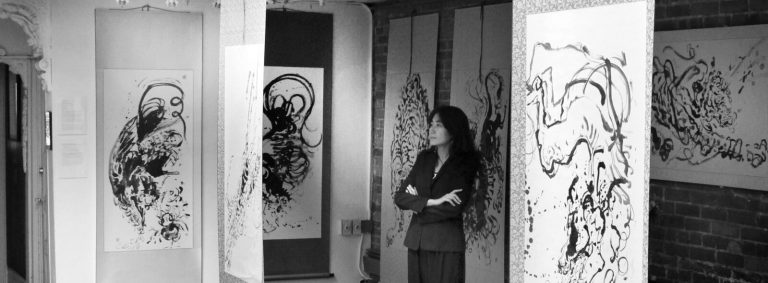Lingnan style guo hua is an early 19th century style of Chinese painting, from Lingnan in the Southern region of China. Its origins are a revolutionary mix of new knowledge from both Japanese painting and Western art. Professor Anita Yan Wong (大白菜) is an Asian American artist who continues to drive guo hua’s revolutionary origins by pushing for a contemporary Lingnan style. She is the founder of the Guo Hua Modernist Movement (國畫型人) and pioneers the Silicon Valley Art and Technology Meetup. The artist, now living and teaching at UC Berkeley S.F. extension California, is a fourth generation Lingnan painter. Anita’s contemporary Lingnan style truly reflects the original slogan of the founding fathers, which is to balance Chinese and Foreign, ancient and modern.
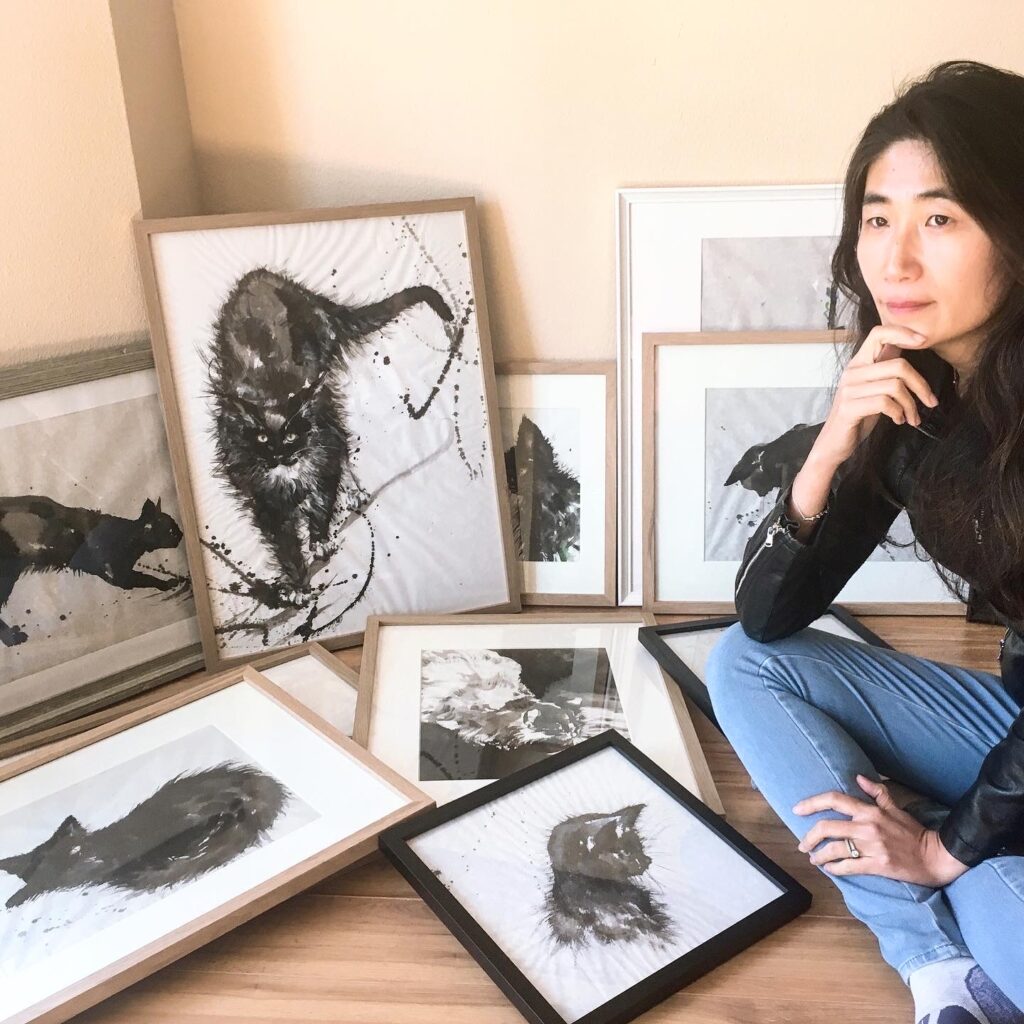
Traditional Lingnan
Anita Yan Wong began her training in Guo hua at the age of five with the master painter Hsin Pengjiu. Her teacher, who is now in her mid 80s, taught Anita the foundations of tradtional Lingnan Guo hua.
The lessons I had were on Sundays. Classes are very structured and very traditional – I remember my teacher ( a very well spoken and elegant woman) wearing a Chinese cheongsam. We read poems and Confucius and I had to memorize some of that in the beginning of class. The second part is Calligraphy practise. And then, because I was young, she would serve me some cake before we began painting. Hsin Pengjiu would demonstrate, always with confidence, how to paint a small painting with birds, flowers and plants (the main subjects in Lingnan Guo Hua) as the main focus of our studies. I would start painting after her demonstration and practice everyday until the next lesson.
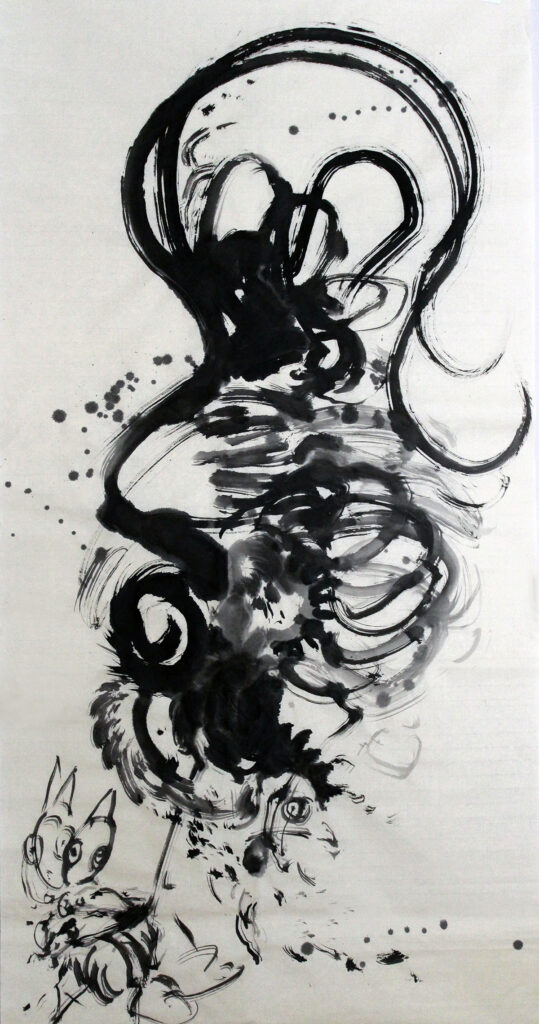
Innovating and the Gua Hua Modernists
One of the best known living Lingnan painters is Au Ho-nien, another student of Chao.
I admire his [Au Ho-Nien’s] contributions to Lingnan art but I’m not sure if his works truly speak to the hard to entertain, fast moving, hip generation z.
This is precisly why, in 2019, Anita founded the Gua Hua Modernists. The goal is inspiring the generation Z to practice Contemporary Traditional Arts in the digital age.
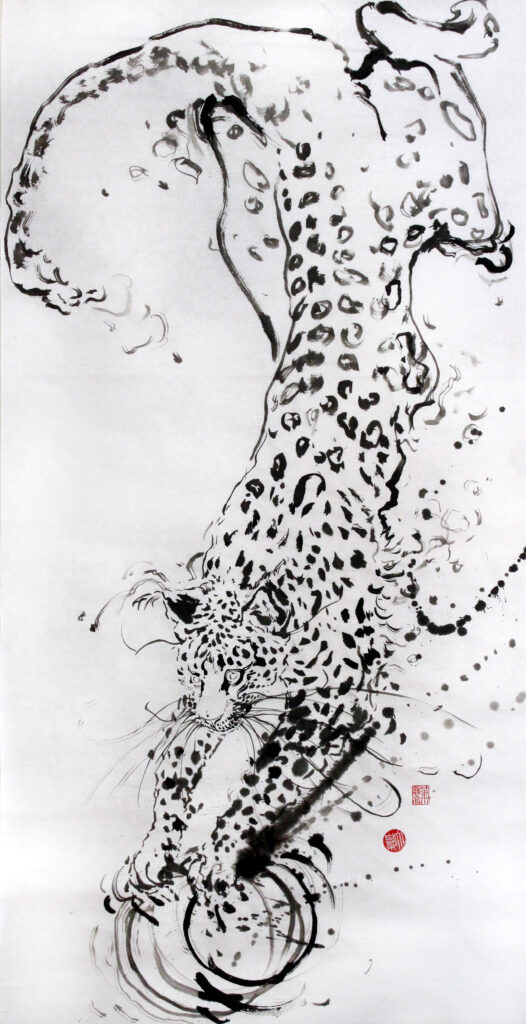
Anita saw that painting the same old subjects and using the same painting techniques was like creating paintings for the old masters not herself. She came to realize that she wanted to innovate her own style but without compromising her traditional foundation.
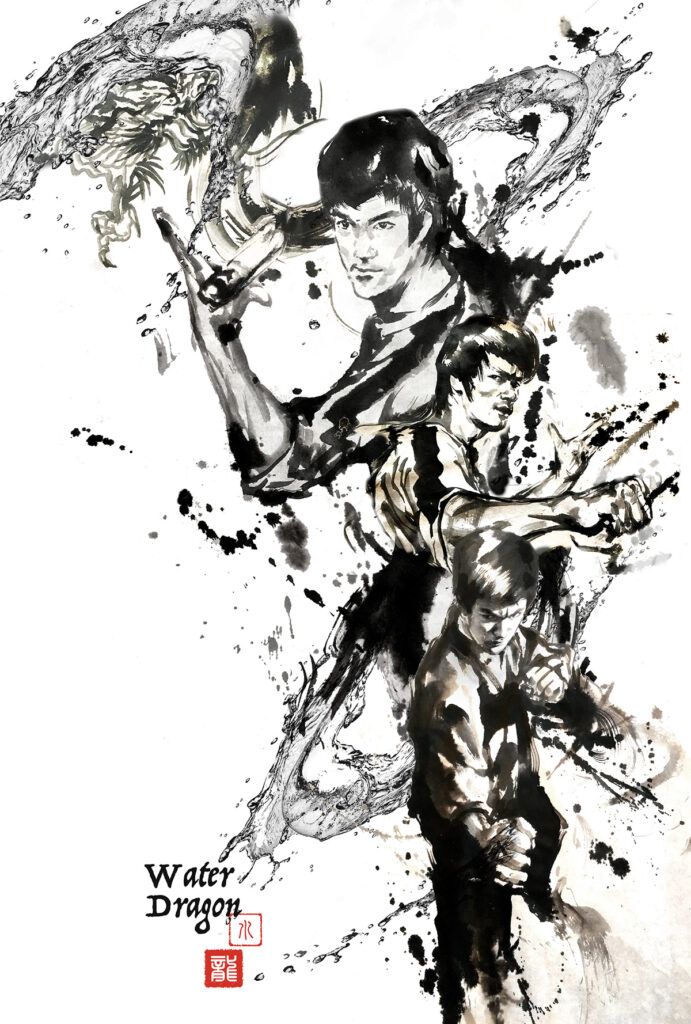
I want to keep this going but move forward and innovate with the right reasons. I want my art to speak to the young generation, because as a Contemporary Traditional artist – I want to keep a beautiful tradition and inspire more (especially the young) to value the beautiful Lingnan art form.
Combining Tradition and Modernity
Anita’s foundation of rigorous traditional painting combined with her thoughtful practice is what results in her gentle Contemporary Lingnan. After ten years training in traditional Lingnan, Anita’s teacher connected her to study from the Lingnan master Chao Shao Ang. Unfortunately the fees were unaffordable. Instead the decision was made for Anita to continue her study in London in order to balance her training in Eastern arts with Western.
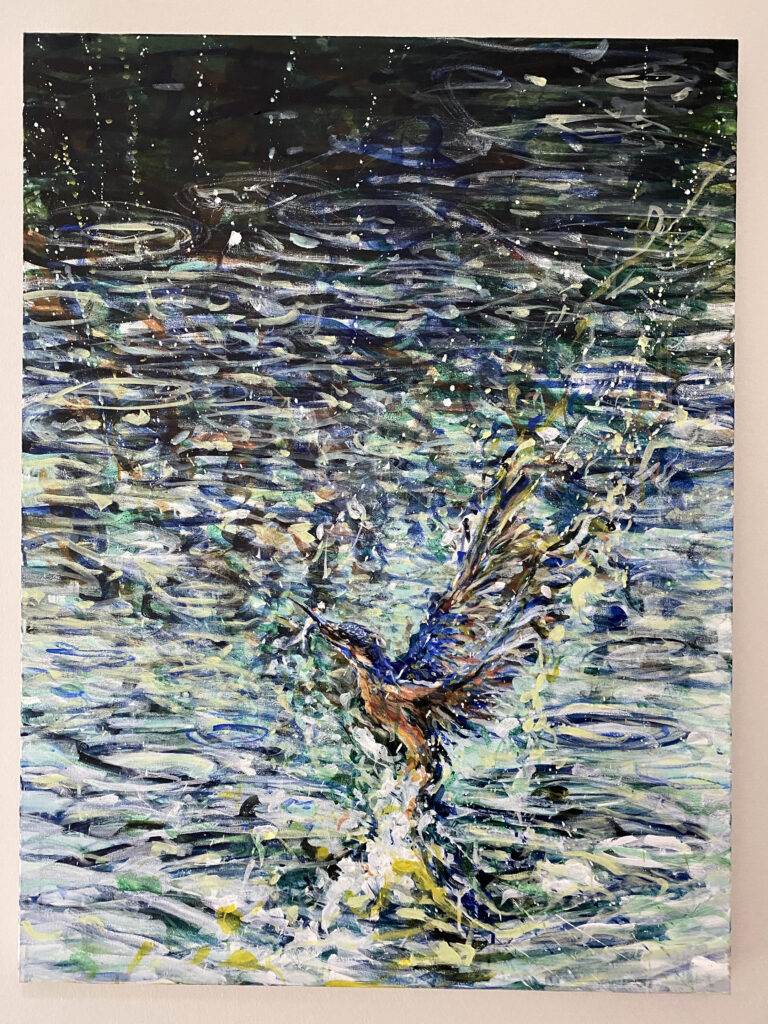
Like 19th century artists, Anita sees connections with western artists in the Chinese techniques of the style. For example, the above painting Kingfisher combines Impressionist and Lingnan techniques.
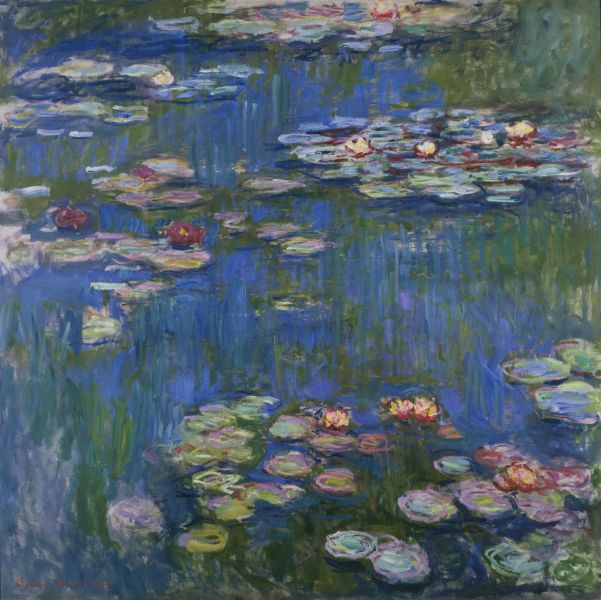
I couldn’t bring myself to follow the trends nor wanted to rush into a new style.
For a while, Anita felt lost as a traditional artist living in the contemporary age. However, one day, while praying and meditating on what to paint something really bizarre happened. Monet‘s Water Lillies came to the forefront of Anita’s mind. She had painted many Chinese-style water lilies and she knew Monet from many art history classes. That weekend, a woman approached Anita out of the blue and gave her a book, saying ‘this is just for you’ – a book about Monet. Anita saw the link between the expressive Impressionist brush work and that of traditional Lingnan.
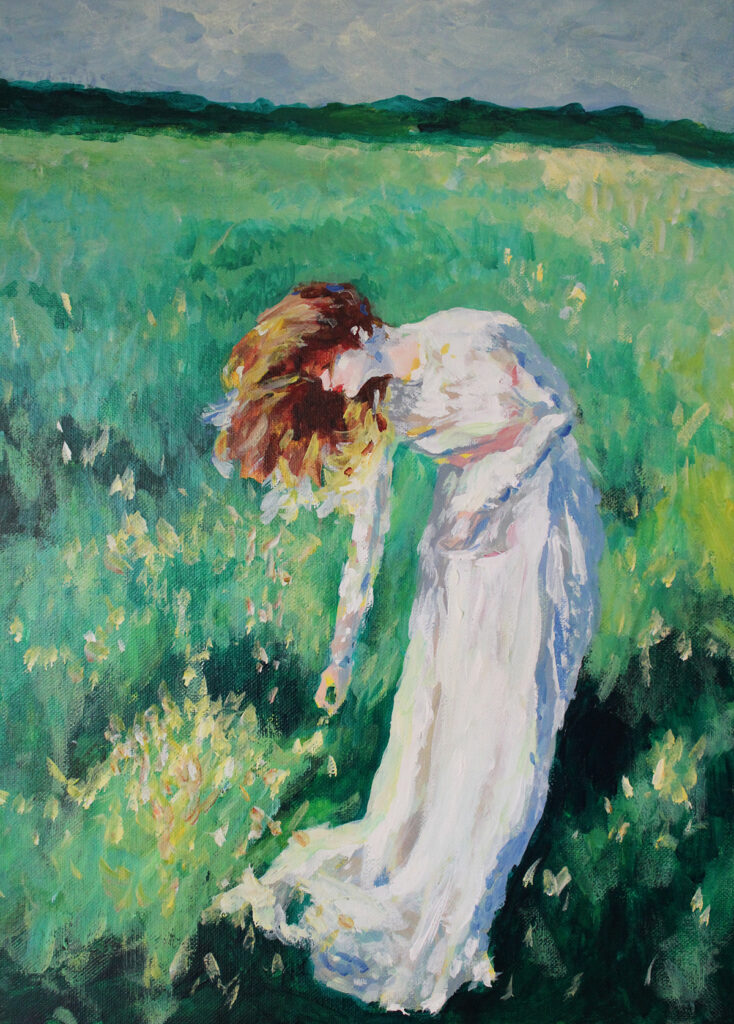
The inspiration of the way Monet captures moving light, texture and time was an enlightening moment in Anita’s artistic life. As you can see, the use of acrylics in the 2017 paintings allow for the presence of both Impressionist and Lingnan brushstrokes!
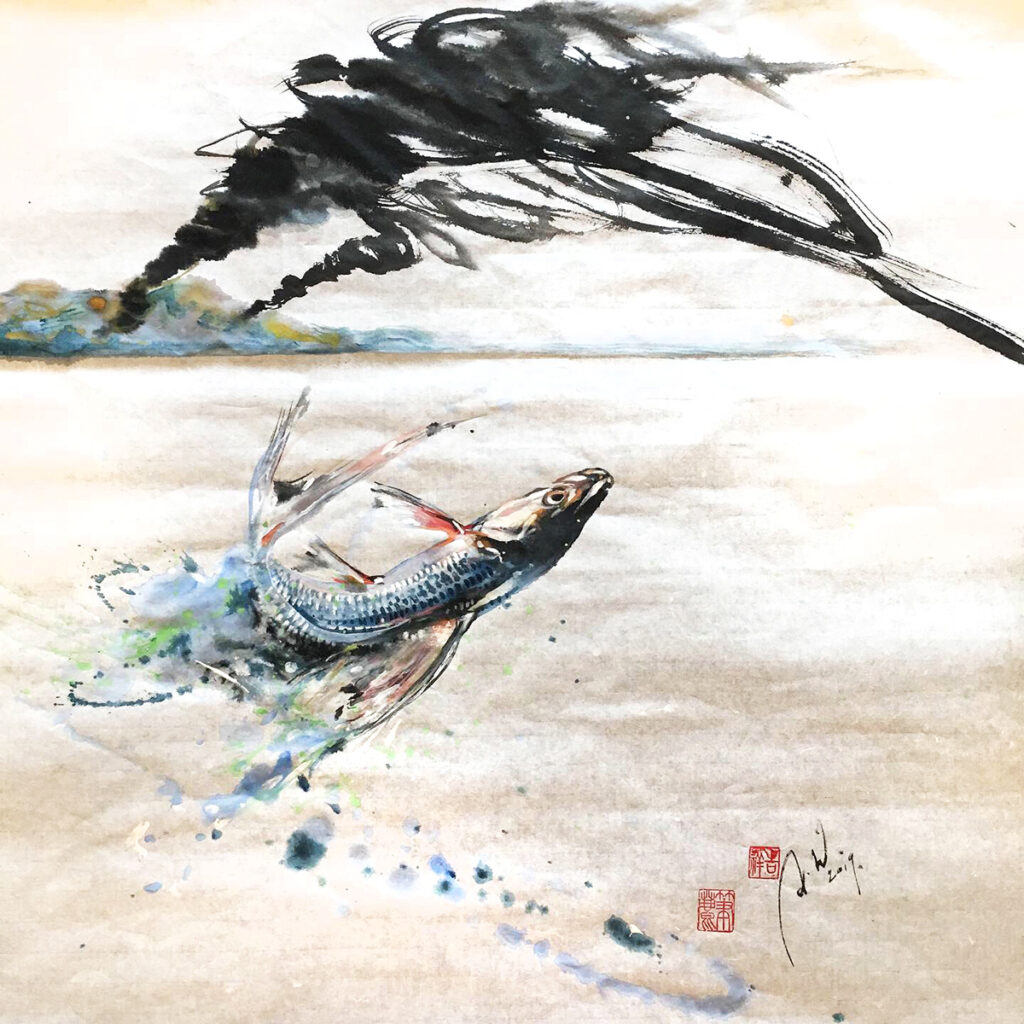
As well as merging artistic techniques and influences, Anita does not shy away from contemporary influence. For example the work on Bruce Lee and also paintings, such as the one above, tackling current environmental issues. Anita is also unafraid to see unusual connections – for example Louise Bourgeois‘ Spider sculptures and the blank inkiness of Chinese painting.
I like how the spider didn’t even really look like a spider, more abstract like many of the Chinese Mogul (boneless) paintings.

The daring and innovation in her work is not always obvious. Such as the fact that the hummingbird painting below is in Lingnan style, yet this is a bird found in America (where Anita lives), not china.
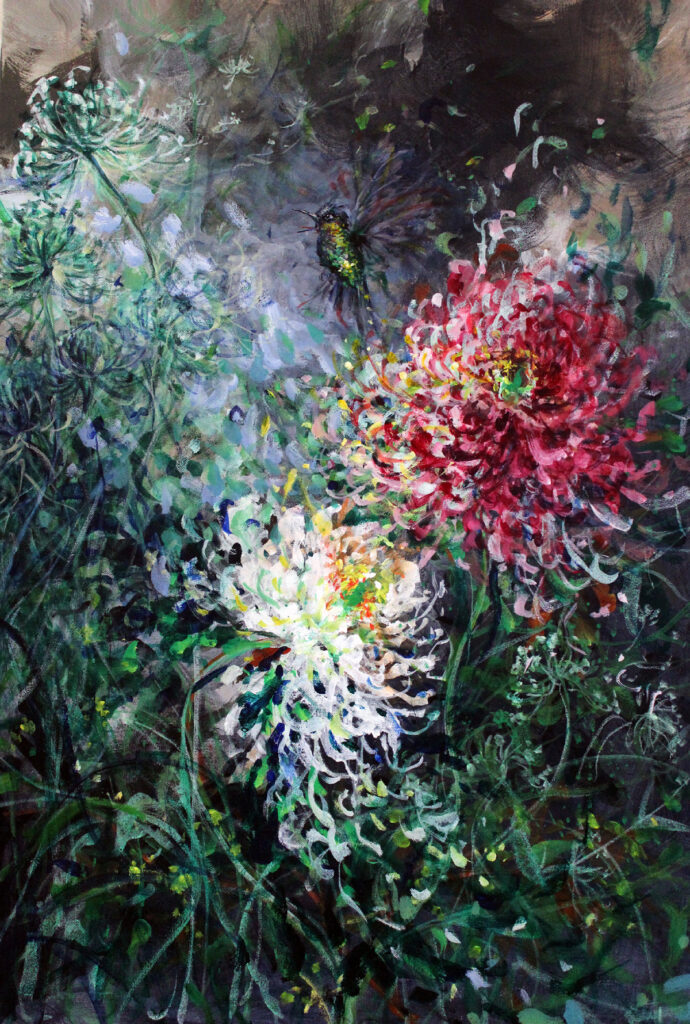
The Personality and Skill in Brush Strokes
These connections and variety of influences make Anita’s work highly meditative and personal. This is because her training in traditional skills are at the forefront of her practice. Through this tradition Anita is most able to express her artistic personality.
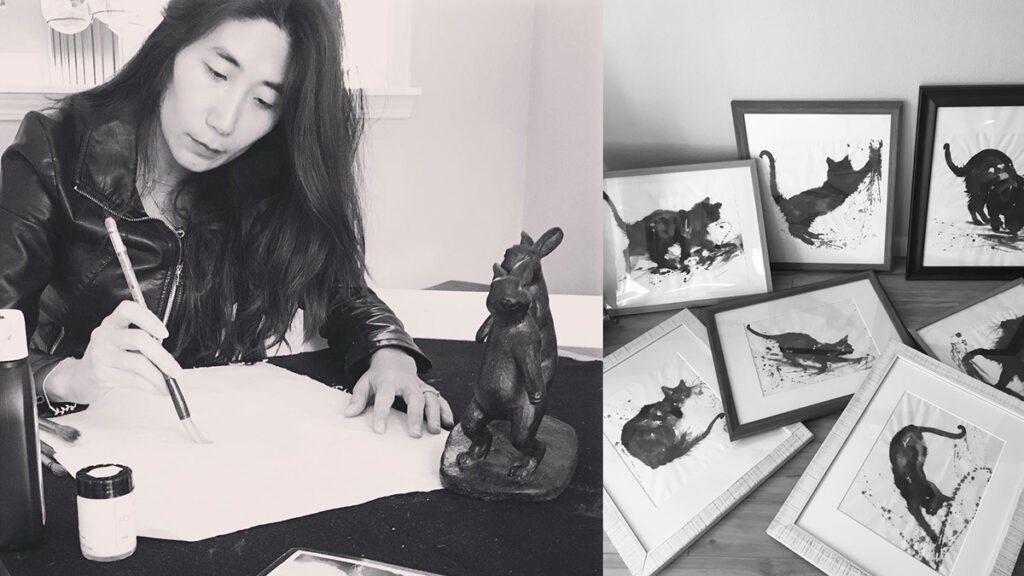
In Anita’s current works the traditional techniques around brush and ink are highlights. The brush in Asian painting, whether it’s traditional or modern, to is very important. You can almost see the artist painting in front of you. A Lingnan painter is able to paint the body of the bird with one stroke – the angle, the amount of water, the amount of ink has to be very precise; you have to have a mental picture before you even paint. When you look at a good painter’s work, you see they practiced for years and years.
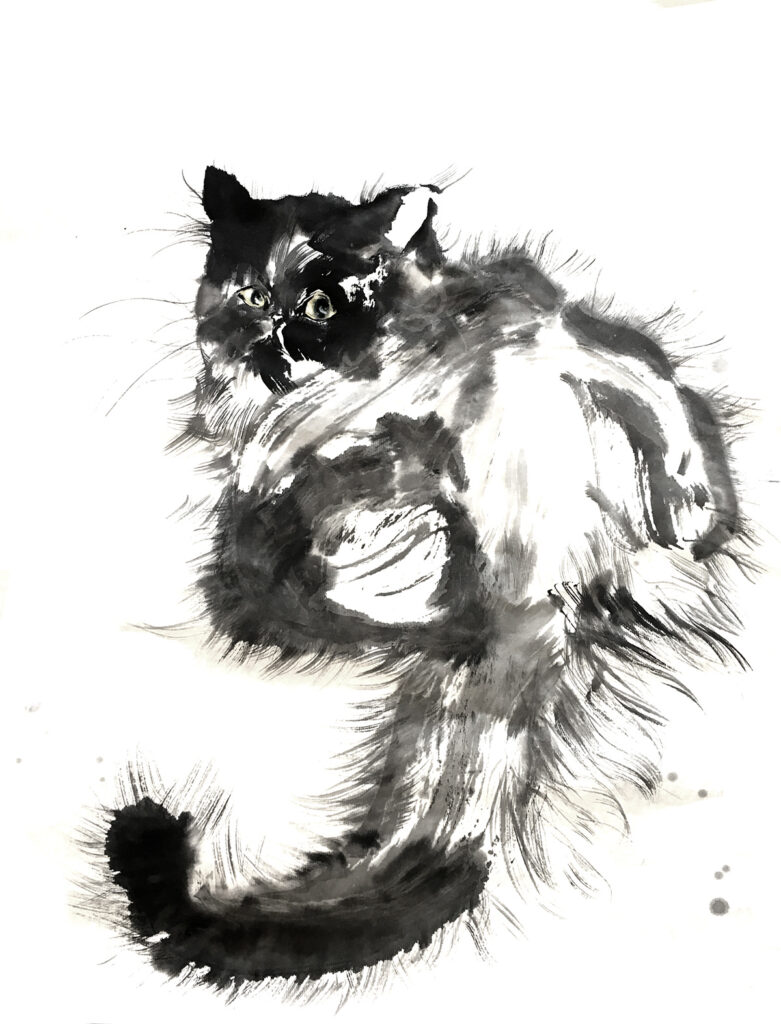
Anita’s 2019 – 2020 painting series ink kittens explores painting as making calligraphy. Each work takes about ten minutes to complete without a sketch or eraser
I see “Bi” (Brush) as my handwriting, an expression highly individual. Freehand brushworks and Happy little accidents I create with ink and brush identify me. They serve as a medium for me to convey my emotions and meanings of the subject. I like to think that pure ink drips left on the rice paper and brush movement in my paintings connects me with the viewers and differentiate my current style from the usually colorful and more detailed Lingnan style.
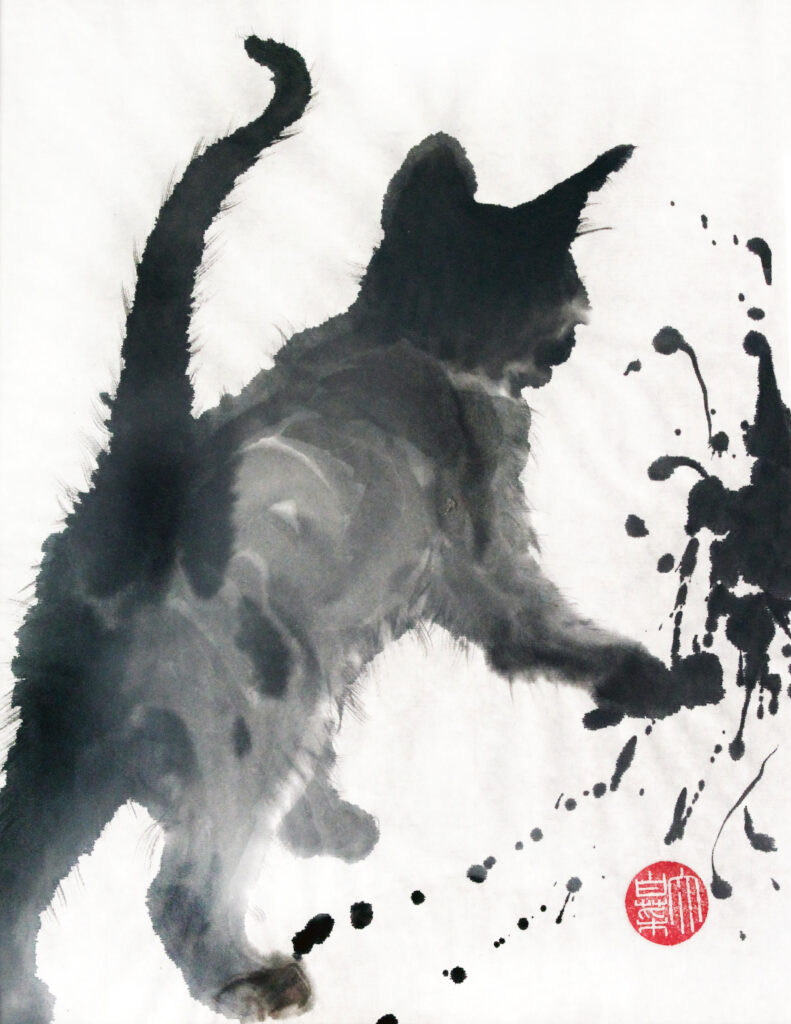
Nature and Art as a Tool to Question the Mind
True to traditional Lingan, Anita retains the theme of the natural world in her pieces. For Anita, nature is a perfect subject for toying with perceptions. Nature tricks our eyes and makes us question reality, such as the reflection of a mountain in a like. This philosophical theme inspires Anita’s Rorschach painting series. Again, the series also demonstrates how Anita is keen to apply the 19th century Lingnan style in new contexts.
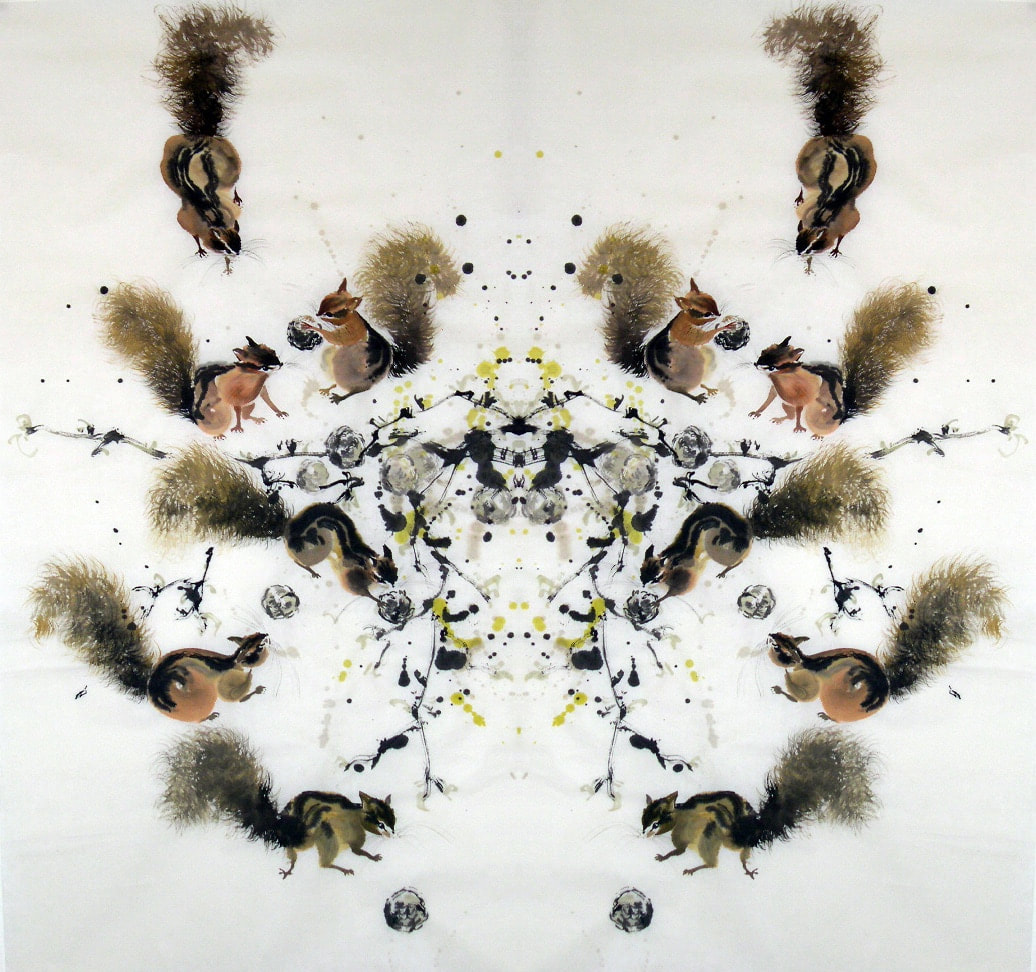
This painting series offers the viewer a Rorschach test. It invites them to question what the individual sees of traditional art in the digital age. This invitation lets the viewer see art with not just the eyes but also the mind. It allows an old ancient art form to question the modern minds.
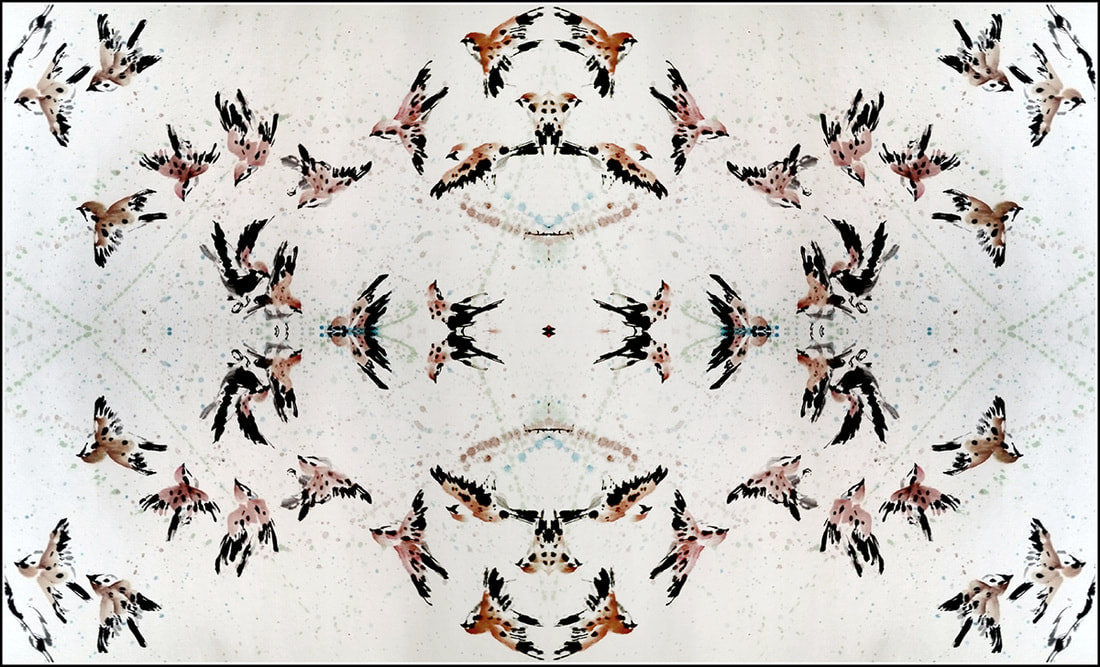
I believe contemporary traditional paintings should not only be intended to please the eye and highlight peaceful feelings, instead it could be used as a tool to question the mind. I often wonder what the young viewers see in my art, I want to bring out their curiosity in traditional art but at the same time admire the beauty of traditional art.
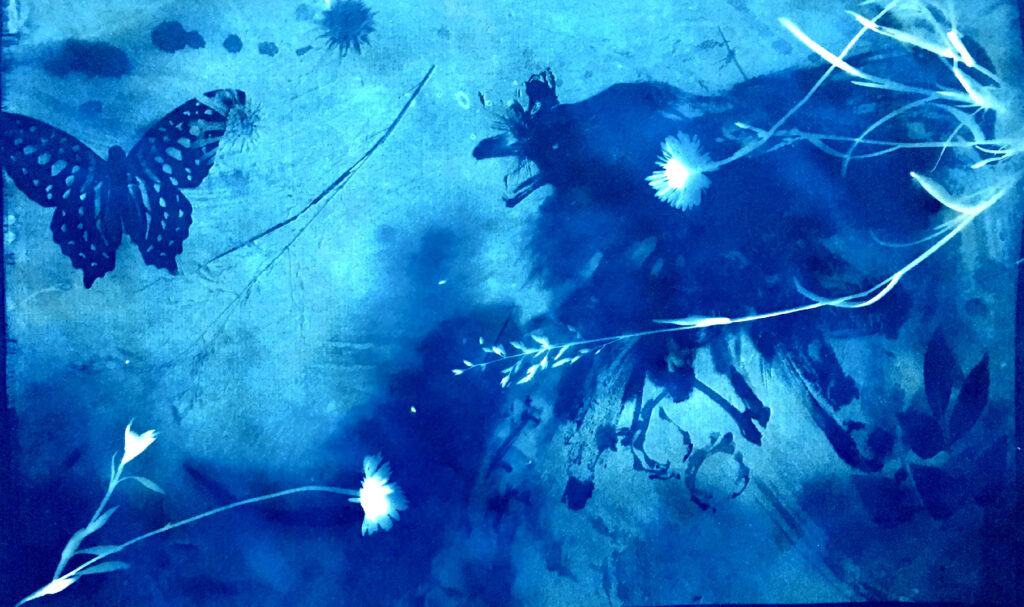
Read more about contemporary artists:
